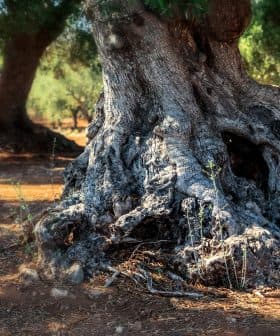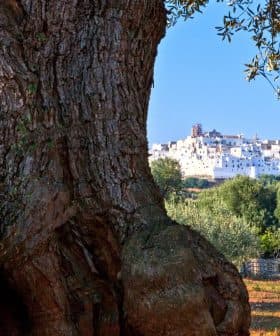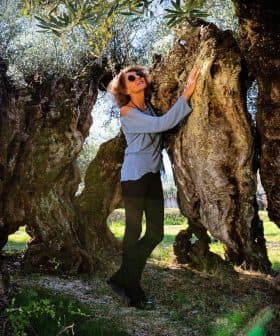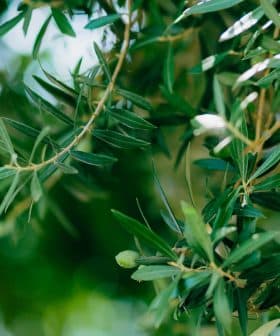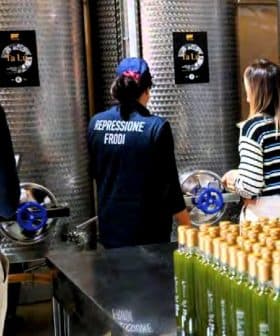New Treatment for Xylella-Infected Trees Is Working, Researchers Say

 Apr. 13, 2020 11:04 UTC
Apr. 13, 2020 11:04 UTCNew research from CREA suggests that an organic treatment involving zinc, copper, and citric acid can help olive trees recover from Xylella fastidiosa outbreaks, allowing for increased production. Farmers in Lecce have successfully used this treatment, combined with proper farming practices, to combat the bacterium and maintain high-quality olive production, without any negative impact on the trees or the olive oil produced.
The application of an organic treatment, combined with good farming practices, can allow the olive trees to return to full production after suffering from an outbreak of Xylella fastidiosa, according to new research from the Council for Agricultural Research and Agricultural Economics Analysis (CREA).
“We experimented with a compound based on zinc, copper, and citric acid – protected by an international patent – that can be used in organic agriculture and is potentially capable of reaching the bacterium in the olive tree xylem,” Marco Scortichini, the research director of the Olive, Fruit Trees and Citrus Center at CREA, told Olive Oil Times.
Our olive trees have managed to recover well (from Xylella fastidiosa), and we have always remained in production with good figures, in terms of both quantity and quality
“According to studies carried out in the United States, zinc and copper ions show the greatest containment capacity of the bacterium, which can be also curbed by the proper management of micronutrients in the plant,” he added.
Based on the European regulations for the management of quarantine pathogens, such as Xylella fastidiosa, the eradication of the bacterium is the first solution proposed as a means of restoring infected areas.
“We have to consider that the successful elimination of phytopathogenic organisms from a territory should be based on well-defined premises including the immediate identification of the disease agent, an infected area of reduced dimensions and favorable biological characteristics,” Scortichini said. “In my opinion, at the time of the discovery of the disease, none of these criteria was manageable in a decisive manner.”
See Also:Xylella fastidiosa NewsXylella fastidiosa lives not only in the olive tree, but also in several cultivated and wild plants. It is transmitted by a very prolific and widespread insect carrier, Philaenus spumarius.
Previous attempts to eliminate the bacterium from all the infected territory, which includes arable land, uncultivated areas, parks and gardens, appeared technically impracticable to the researchers and destined not to resolve the situation.
Then they began experimenting with the aforementioned organic compound, combined with appropriate farming practices. These include removing weeds and other vectors for the spittlebug that may be growing in the groves and pruning the olive trees in order to allow better absorption of the compound.
After three years of trials and follow-ups, the research group concluded that the product is an effective bactericide and remarkably systematic, leading to a significant reduction of symptoms and bacteria populations inside the trees.
The trials also confirm that the compound is not phytotoxic to olive trees and no residue from the compound could be detected in the oil produced from the olives of the trees.
Over time, several farms started to adopt the protocol and have been constantly monitored by the research group.
“We started to implement this treatment and, pretty fast, we had good results visible with the naked eye, therefore we continued,” Francesca Minosi, of the Lanciano Elisa farm in the province of Lecce, said.
“Our experience began about four years ago, when some of our olive trees showed symptoms of desiccation,” Minosi, who manages olive groves composed of Ogliarola salentina and Cellina di Nardò varieties, said.
“While looking for solutions to this new disease and discussing them with other olive growers and people in the sector, we found this set of practices which we first decided to apply to 200 trees,” she added.
After a year of treatment, Minosi met the researchers and agreed to allow them to monitor and collect data from her orchards.
“The symptoms of desiccation practically disappeared, shortly after we started,” she said.
Over the years, especially in late spring or early summer, Minosi had observed sporadic episodes of desiccation in her groves. However, she stopped noticing them after the application of the organic compound.
“Our olive trees have managed to recover well, and we have always remained in production with good figures, in terms of both quantity and quality,” she added.
Since the initial trial, she has extended the protocol to all her groves – a total of 1,200 trees.
“We did not want to explant our centenary trees because, at the time, nobody was certain of what would happen,” Minosi said. “Eradicating and implanting them seemed too hazardous. We felt this was the most appropriate way to handle the emergency.”
The researchers point out that the use of the compound is aimed at growers with medium and small operations who, for various reasons such as traditional harvesting or logistical difficulties, cannot manage replacement operations in their olive groves.
In the provinces of Lecce and Taranto, there are two distinct groups of olive farmers testing out the researchers’ compound: a group of farmers entering their fourth and fifth year of the application and another group entering their third year.
“They all reached an average annual production, depending on the harvest, between four and six tons per hectare (1.6 to 2.4 tons per acre), meeting normal production standards,” Scortichini said. “Moreover, all these farmers are preserving the historical, cultural, and landscape heritage, as well as the unique germplasm of Salento.”
As Southern Italy enters the full throes of spring, farmers are mowing the grass in their groves in accordance with the low-environmental-impact agronomic and physiatric phytosanitary measures recommended by the Puglia regional government.
“The most effective tool to combat the spread of Xylella on the regional territory is to prevent its spread over short and medium distances, and to do this, it is very important to eliminate vectors,” the regional authority said. “April is the most strategic month for the fight against vectors, since the insect is still in its juvenile stage, static and vulnerable, and easily localized on wild plants.”
“In this month, it is essential to eliminate the spontaneous flora on which the nymphs live, with plowing or shredding, to significantly reduce the juvenile population of the vectors present in the fields and in particular in the olive groves,” the authority added.


 Ylenia Granitto
Ylenia Granitto
